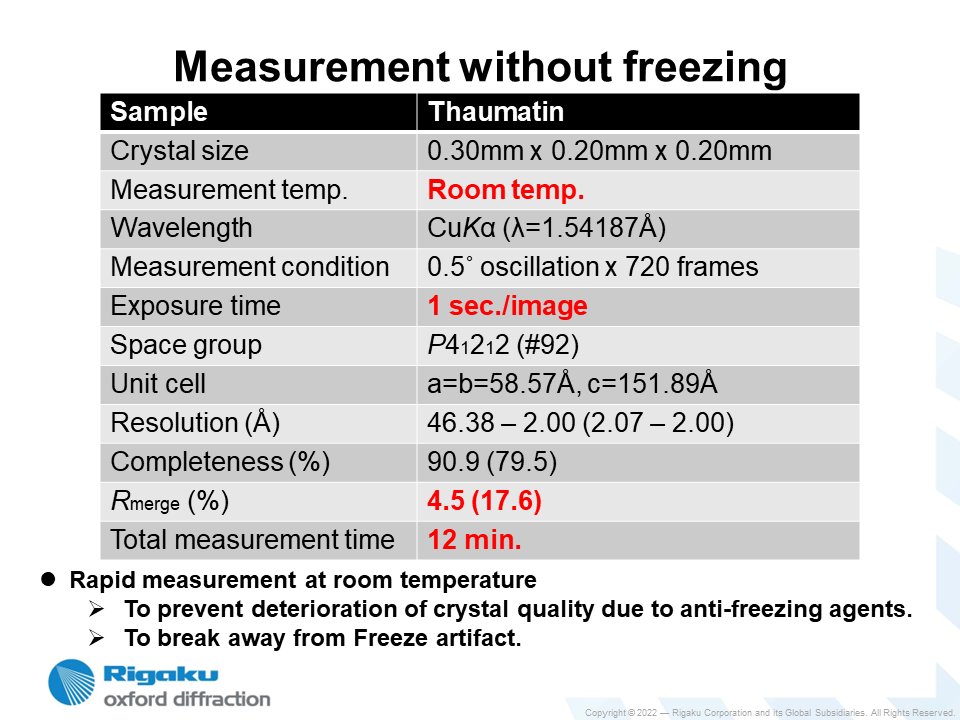Measurement without freezing
Protein crystals are generally measured by freezing the crystals at liquid nitrogen temperature to reduce damage caused by X-ray radiation.
The anti-freezing agent used when freezing the crystals must be appropriate for each type of protein crystal.vUse of an incompatible anti-freezing agent results in deterioration of the quality of the crystals, making it impossible to draw out their full potential.
It is also believed that the anti-freeze agent interacts with the protein in the crystals and slightly changes the protein structure.
The importance of preventing the deterioration of crystal quality due to anti-freezing agents and of structural analysis at room temperature, free from freeze artifacts caused by crystal freezing using anti-freezing agents, has recently been discussed.
The importance of structural analysis at room temperature, free from artifacts caused by crystal freezing, has recently been discussed.
Room temperature measurements are now possible with laboratory equipment by combining a high-brightness X-ray generator, the newly developed HyPix-6000HE one-photon detection hybrid pixel detector, and an optimized measurement schedule with CrysAlisPro.

